A Legacy in Every Bottle: The Alves Family Story
At Musto Wine Grape Company, we love sharing the stories behind the winemakers who turn grapes into lasting family traditions. One of those stories belongs to Justin Timpano and his father-in-law Al Alves, whose winemaking roots trace back more than 60 years to the small Portuguese village of Carvalheiro. What began with Al’s grandfather crushing grapes by hand in a stone bowl has grown into a multi-generational passion carried from Portugal to Connecticut.
Justin, tell us the story of your wife’s (Melissa’s) family and how they first got into winemaking:
My wife’s father Al and Uncle Angelo are from a small village in Portugal called Carvalheiro. It’s about an hour and a half’s drive northeast of Lisbon. It’s a beautiful area where they still own the house they grew up in, acres of farmland and hundreds of cork trees. Wine making has been a part of the Alves family for over 60 years. It started with Al and Angelo’s grandfather making wine by crushing grapes in a stone bowl by hand. Al and Angelo, along with their brother Nelson carried the tradition to states and typically made a red field blend they would bottle or keg and drink during Sporting (soccer) games and family parties. I remember the first time I saw the process at Melissa’s grandmothers house in Hartford, big blue drums, manual crusher and a homemade wood punch down. Their wine was so good and the process looked like so much fun so I asked to join them about 12 years ago and have been making wine ever since. I now make the family wine and am really proud to carry on their tradition.
Al, Angelo and I this summer at the local store in Carvalheiro having a 50 cent glass of wine
Al walking next to the family cork trees
How did you and the family both start making wine together?
I had been making wine for 5 or 6 years when Mike (my brother in law) and I went to Jonathan Edwards Winery one afternoon with our family. Mike at that point didn’t have a lot of exposure to red wine. After a few glasses of their 2017 red zinfandel, Mike was interested in joining and I wanted to do what Al, Angelo and Nelson did and make wine making a family tradition. Mike has fallen in love with the process and now hosts a podcast called Vino Volley, a show about soccer and wine. Neither of us are Portuguese but we both love Portugal and our wine is inspired by reds we have tasted from vacations and the Portuguese style field blends made by the family for generations.
How have you’ve gotten more family and friends involved over time?
I feel like every home wine maker who has friends and family that drinks and enjoys their wine somehow ends up growing their group. At one point, we had 8 or 9 guys making wine at my house until we all had kids and decided to break up the band. My good friends Kevin Lawton and Milton Quaresma now have their own setups at their houses and continue to make great wine. Kevin makes high end Cabs and Milton is on to Italian reds. We all still regularly get together and bring our favorite wines to share. I think and hope wine will keep us connected as our kids grow. This year we are expanding our team again with my Dad, Jim, making a rosé and cousins Danny and Bruno joining in on our red blend.
Below are pictures of Kevin and his family making thier high end cabernet at home!
For Justin and Al, winemaking is more than a hobby—it’s a thread that connects generations, cultures, and memories. From a small stone bowl in Portugal to a family cellar in Connecticut, every crush, every bottle, and every shared glass is a tribute to the love, laughter, and legacy that started it all. It’s stories like theirs that remind us why we do what we do at Musto Wine Grape Company—because behind every great wine is a family, a friendship, and a tradition worth preserving.
🍷 Want to start your own winemaking story?
Musto Wine Grape Company is here to help you every step of the way, from grapes and juices to equipment, education, and support. Visit www.juicegrape.com or stop by to get started.
National Donut Day Donut & Wine Pairings
Happy National Donut Day! What better way to celebrate than pairing those tasty round treats with some wines that allow you to unlock a whole new world of flavors?! Let’s get to it.
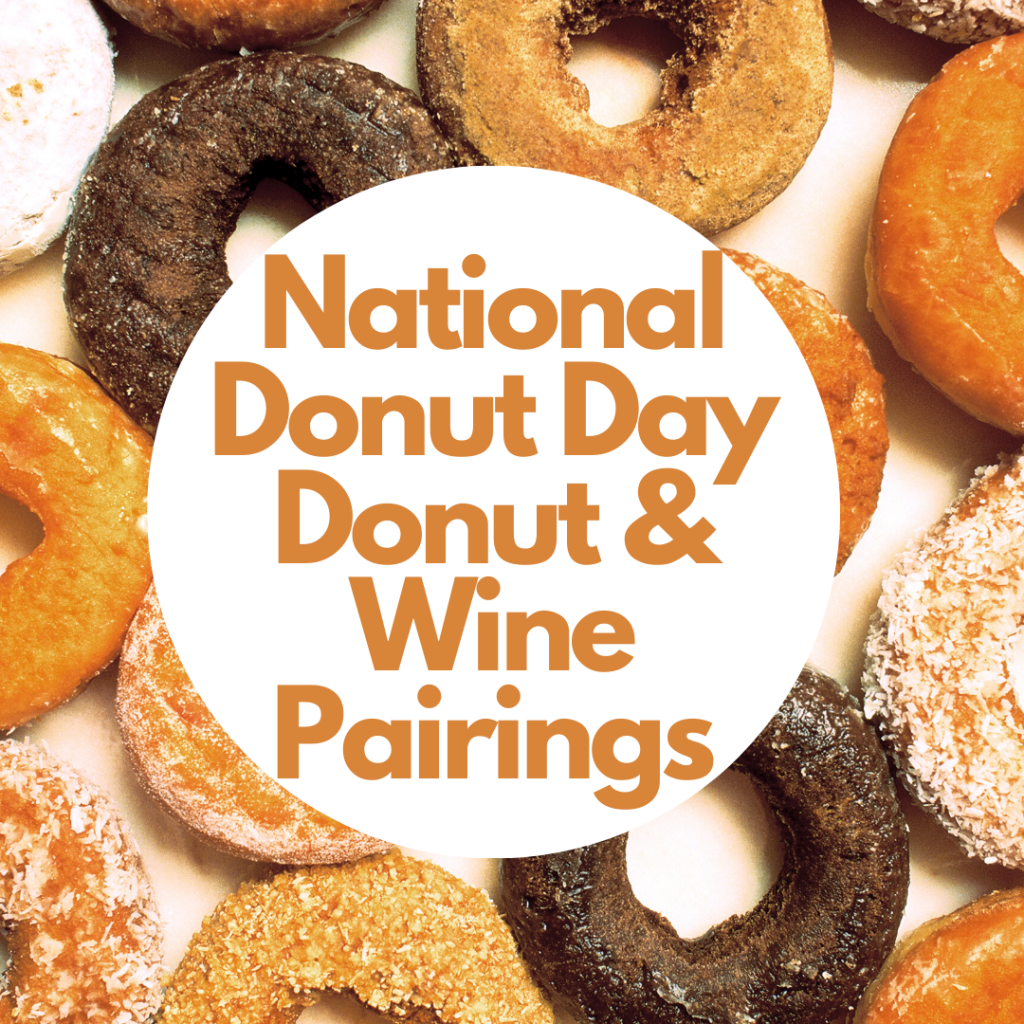
First we’ll start with a classic, the chocolate frosted donut with sprinkles!
Prosseco is the perfect pairing for this donut. The airiness of the donut lounging underneath the decadent frosting is a match made in heaven with this bubble-filled wine. The sugary frosting brings out the sweetness of the Prosecco. For Connecticut residents, try Donut Crazy’s Chocolate Frosted Sprinkle Donut! They have multiple locations in CT ranging from West Hartford to Branford.
Next, how about a jelly donut? Yes please.
Rosé and a jelly donut, specifically one with raspberry jelly filling, compliment each other extremely well. The bitterness of Rosé softens when you pair these two together, giving the raspberry flavors the center stage. At the same time, the wine mutes the sugary sweetness of the donut’s sugar coating, making it one elegant bite! We recommend once again Donut Crazy’s Powdered Jelly Donut, because they’re just that good!
Now the plain jane glazed donut, an underdog in the donut world. Simple yet total donut perfection.
Grab some Chardonnay for this one – the underlying hints of vanilla and toffee in the donut go perfectly with the same flavors in the wine. Chardonnay manages to bring out these flavors in this donut rather than mask them. Despite the sweetness of the donut the Chardonnay remains smooth! Grab your glazed donut from Neil’s Donuts in Wallingford, a donut goldmine in CT!
Last but certainly not least, the double chocolate glazed donut. A chocolate lover’s saving grace.
Finding the right wine to go with Chocolate can have you standing in the wine isles for a while pondering of which one will go best, but we’ll make it easy for you: Syrah. The bold double chocolate between the cake and the frosting of this donut pairs perfectly with the dark, jammy, fruit-forward flavors of Syrah. This pairing will give you a boozy chocolate covered strawberry vibe, how can you resist?! Pick up some Krispy Kreme Glazed Chocolate Cake Donuts for this pairing, yes we said donuts as in multiple donuts, get a whole dozen because one will not be enough. We speak from experience.
We wish everyone a happy and yummy national donut day!
The Winemaker’s Think Tank: Vol 9 – How long will my wine last?
What’s the Winemaker’s Think Tank?
Every Thursday we will post about a few frequently asked questions that our winemaker has answered. If you have a winemaking question you would like to have answered, please email us at support@juicegrape.com and we will try to get into next week’s post. Cheers! 🙂
How long will my wine last?
All wine ages differently. Certain varietals benefit from aging, others are meant to be consumed quickly. Generally, the more tannic the wine, more it will benefit from aging. Other factors influence a wine’s potential to age as well. If the winemaker chooses not to add sulfites to the wine (not recommended), the wine will not age as well and should be consumed within a year. If the proper level of sulfites are added, the wine stored at an appropriate temperature (55-62 degrees Farenheit), and not exposed to light, it should be able to age for many years. Some varietals that benefit from aging are Chardonnay, Cabernet Sauvignon, and Malbec. Some varietals that do not necessarily benefit from aging are Gewurztraminer, Sauvignon Blanc, and Cayuga.
We hope this information helps with your winemaking. If you have any follow up questions or winemaking questions in general, please email us at support@juicegrape.com.
Italian Juices will start to arrive the Week of 10/10
Fresco Juices and Other Italian Juices will start to arrive the Week of 10/10
Please give us a call at 877.812.1137 or email us at sales@juicegrape.com to schedule your pick up.
Mosti Mondiale’s flagship refrigerated fresh grape juice product, Mondiale Fresco, has served the home winemaking community since 1989. Sourced from both Italy and California, Mondiale Fresco marks the beginning of a new winemaking season based on traditional practices that have crafted wines of significant character. With over 30 fresh varieties to choose from, Mondiale Fresco is proud to be the only product to offer home winemakers their own vineyard in one unique package.
Mosti Fresco Juices are PRE ORDER ONLY. If you have not pre-ordered yet please give us a call at 877.812.1137 or email us at sales@juicegrape.com.
Mosti Fresco Fresh Juice Instructions
Mosti Fresco Varieties:
- ALICANTE (CALIFORNIA)
- AMARONE (ITALY)
- BARBERA (CALIFORNIA)
- BAROLO (ITALY)
- BOURG ROYAL (CALIFORNIA)
- CABERNET FRANC (CALI)
- CABERNET SAUVIGNON (CALIFORNIA)
- CASTEL DEL PAPA (ITALY)
- CHIANTI (ITALY)
- LAMBRUSCO (ITALY)
- MERLOT (ITALY)
- MONTELPULCIANO (ITALY)
- NEBBIOLO (ITALY)
- NERO D’AVOLA (ITALY)
- PETITE SIRAH (CALIFORNIA)
- PINOT NOIR (CALIFORNIA)
- RUBY CABERNET (CALIFORNIA)
- SANGIOVESE (ITALY)
- SHIRAZ (CALIFORNIA)
- VALPOLICELLA (ITALY)
- ZINFANDEL (CALIFORNIA)
- GRENACHE ROSE (CALIFORNIA)
- ZINFANDEL ROSE (CALIFORNIA)
- CHENIN BLANC (CALIFORNIA)
- GEWÜRZTRAMINER (CALIFORNIA)
- MOSCATO (CALIFORNIA)
- PINOT CHARDONNAY (CALIFORNIA)
- PINOT GRIGIO (ITALY)
- RIESLING (CALIFORNIA)
- SAUVIGNON BLANC (CALIFORNIA)
- SOAVE (ITALY)
- TOACAI (ITALY)
- TREBBIANO (ITALY)
- VINHO VERDE (CALIFORNIA)
- MALVASIA AROMATICA (ITALY)
- MOSCATO ITALIANO (ITALY)
Our Italian juices are prepared in multiple ways for multiple winemaking opportunities. We have our Italian Fresh Juices, Mosti Fresco Juices, and Original All Juice Sterile Juices. All of our juices are handled with utmost quality and care.
Other Italian Juice Opportunities:
Fresh Italian Juices: Our Mosto Imperatore Italian juices have arrived! Create the best wines Italy has to offer. We have all the specialty varietals and blends – Amarone, Barolo, Brunello, Chianti, Dolchetto, Lambrusco, Montelpulciano, Moscato, Nebbiolo, Nero D’Avola, Pinot Grigio, Sangiovese, Trebbiano, and Valpolicella.
Sterile Italian Juices: Mosti Mondiale’s 23L Original AllJuice is a true 100% pasteurized fresh grape must product. Experienced winemakers looking to complement their skills and patience will become instantly rewarded with the introduction of fresh grape must. Italian Varieties: Castel del Papa, Lambrusco, Montelpulciano, Nero D’Avola, Trebbiano, Moscato, and Il Toscano (Chianti)
Please give us a call at 877.812.1137 or email us at sales@juicegrape.com to schedule your pick up.
Harvest Update: 8/25/2016
ARRIVING to Hartford, CT Early Next Week:
8/29/2016:
LODI
- Costamagna Chardonnay
- Lodi Gold Grenache
- Valley Beauty Barbera
- Smiling Baby Merlot
- Valley Beauty Zinfandel
9/1/2016:
LANZA – Suisun Valley
- Sauvignon Blanc
CENTRAL VALLEY
- Cry Baby Muscat (42lb)
- Muscat King (42lb)
- Cry Baby Thompson Seedless (42lb)
- Lugano Old Vine Zinfandel
- Lucerne Old Vine Zinfandel
JUICES from LODI
- A Mix of Varieties
Call 877.812.1137 or email sales@juicegrape.com for more information
Red Wine Essence Aroma Kit
Every “Wine Wednesday” we have decided to work on some type of wine education. This Wednesday we decided to focus on the aromas in Red Wine.
So the first question is – Where do wine aromas come from? Well they initially come from the grape and the terrior. Have you ever heard the quote “you can’t make great wine from bad grapes, but you can make bad wine from great grapes”? This couldn’t be more true. The grape is the starting point for the wine and its aromas. That being said, different grape varieties have different aromas associated with them. For example, most red wines have notes of dark berries and other plants. Specifically, Cabernet Sauvignon usually has aromas of black currant, mint, and violet. Each wine grape has a different aroma starting point which is impacted by where the grapes is grown, the yeast that is inoculated, oak, and any other additives that are introduced into the wine during the fermentation and aging process. Red wine aromas are complicated but pleasing representations of the vineyard & winemaker’s work.
When tasting wines many people have difficulty describing the different aromas they smell. The kit that we used challenged us to identity specific aromas and describe them. First, we smelled each essence and guessed what it was. We had some interesting descriptors…bubblegum, salt water, and aftershave just to name a few. When the actual aromas were revealed sometimes we were right and sometimes we were way off. But being challenged to describe what we smelled and training our sense of smell will only help us when making our own wines. This will also help us at wine judging events, winemaking events, and even when identifying faults.
All in all it was a great learning experience.
Stay tuned for more updates about our wine education courses (we will be adding a new aromas/faults class soon) and Spring Harvest Updates! Cheers!
Winter at Cassidy Hill Vineyards
Winter time in the vineyard is very important. What happens at the beginning of the year sets the tone for the vintage to come. Cassidy Hill Vineyards in Coventry, CT was kind enough to send us some photos of what is going on in their vineyard this winter. As you can see there is a lot of snow but once the snow melts they will get back to pruning. It looks like it’s their vineyard dog’s favorite activity, don’t you think? 🙂 Notice the close up pictures of the vines. There is an example of a non-pruned vine and what the vine looks like after they went through and pruned.
Pruning can be a very tedious task. The grapes are only harvested off of 2nd year wood. Therefore, off of each spur you prune down to one cane. Off of each cane you prune down to two buds and each bud will grow into a new cane. Each cane will then have 2 clusters. It sounds simple enough but many vineyard managers will tell you it can be difficult and time consuming. The next time you drive by your local vineyard take a look at what stage of life the grapes are in. Are they dormant? Have the vines been pruned? Do you see bud break? Just because it isn’t harvest, doesn’t mean there isn’t work to be done in the vineyard.








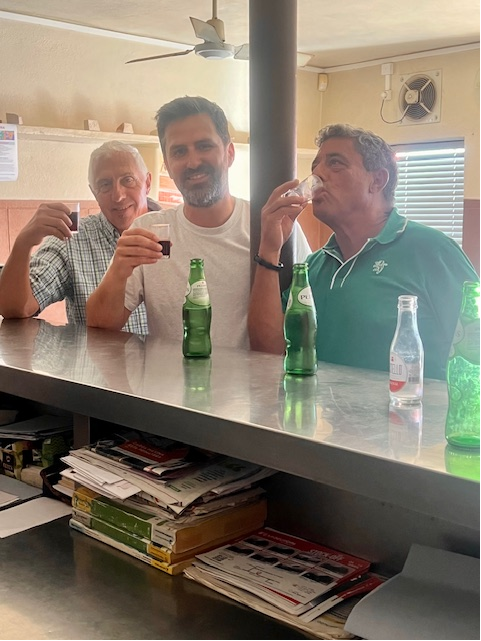
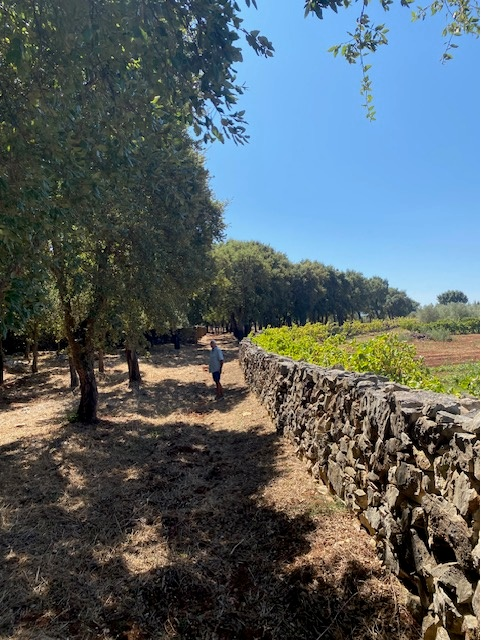
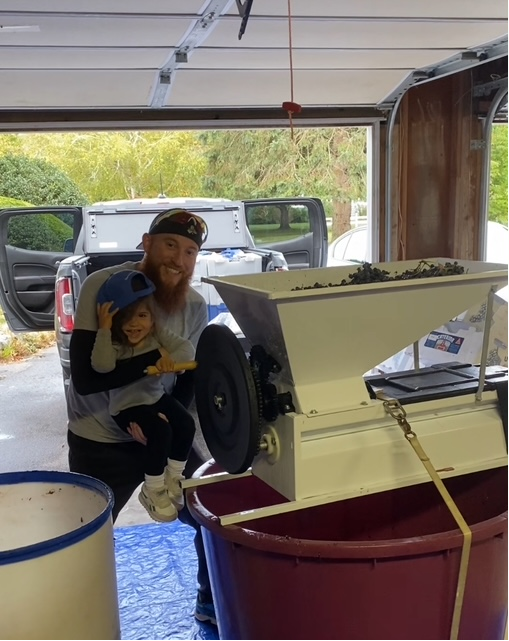
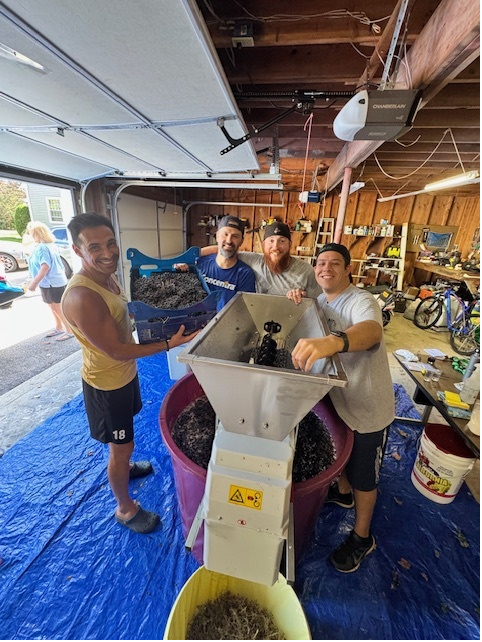
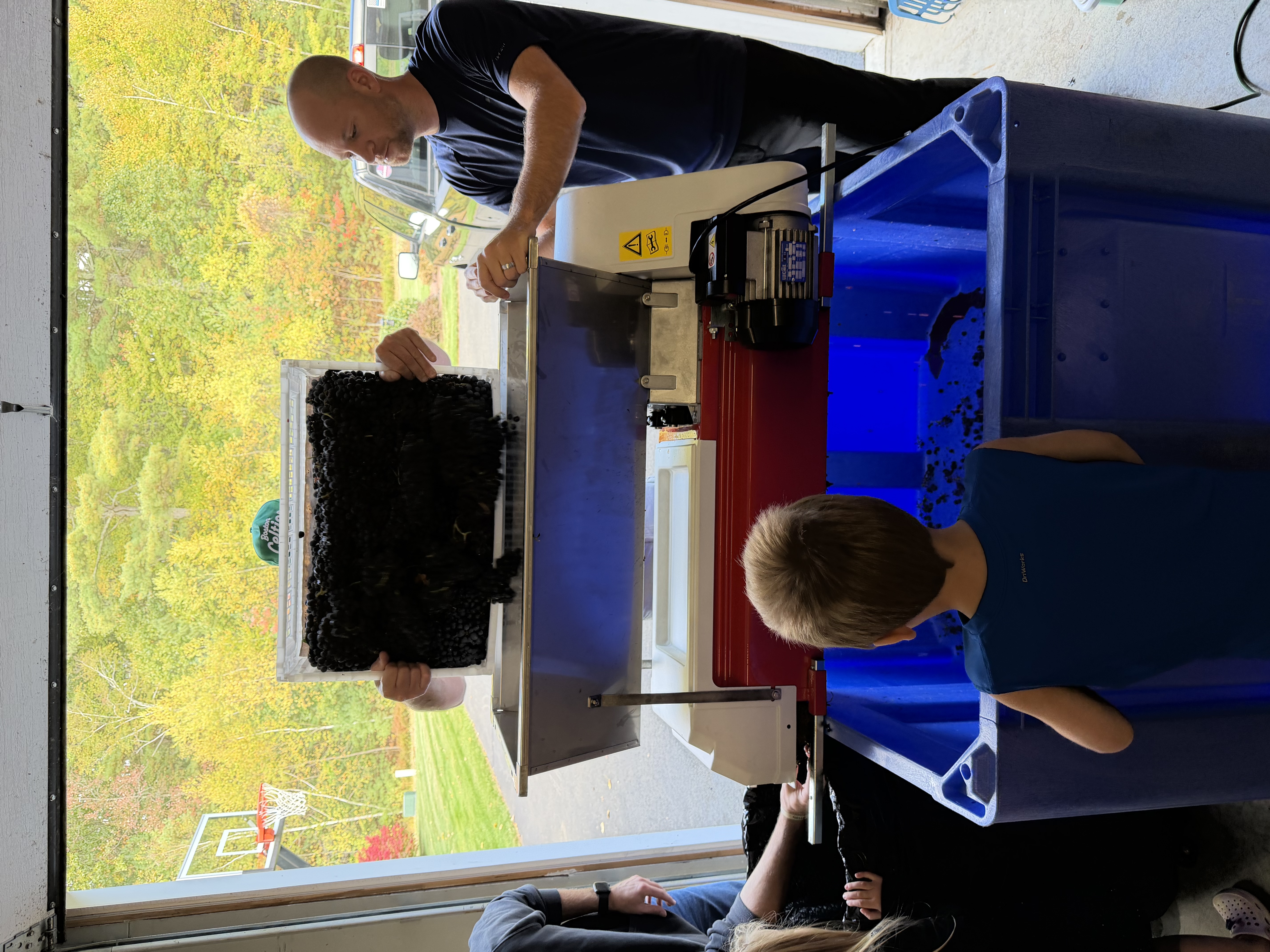
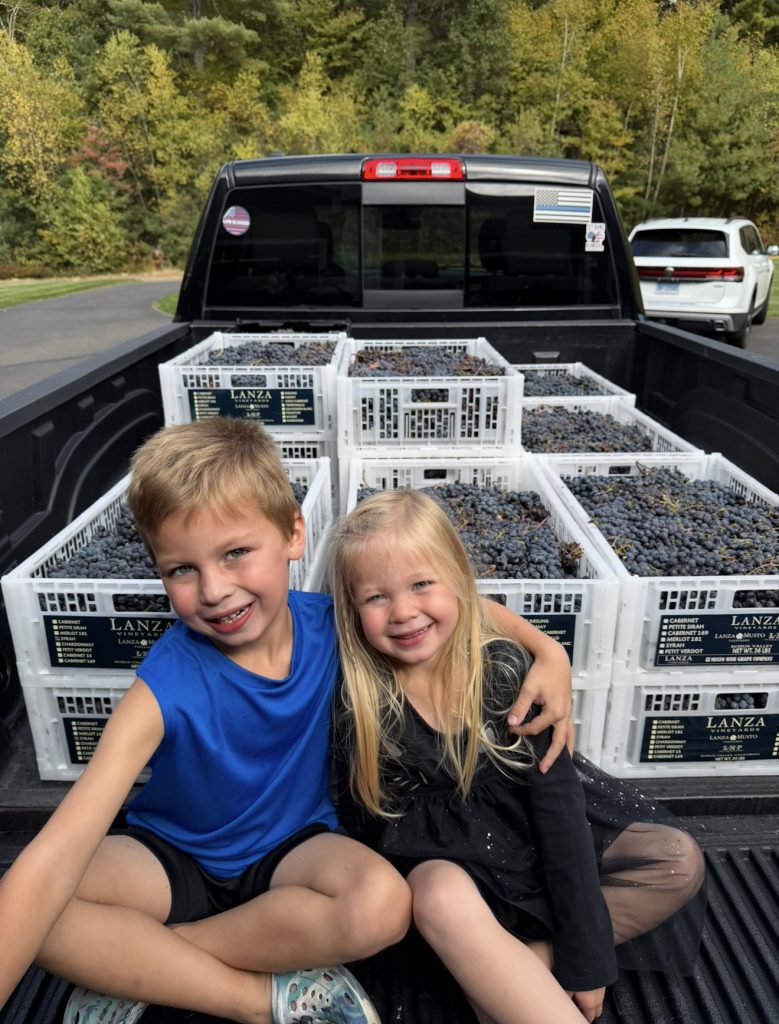
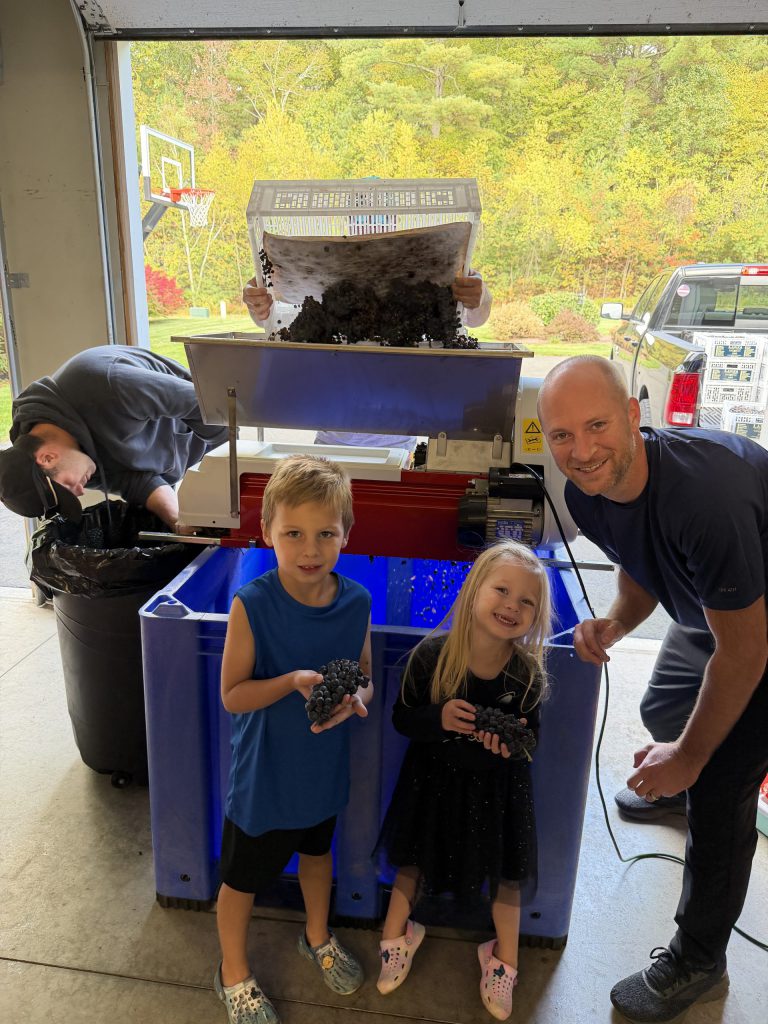
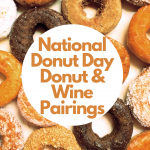
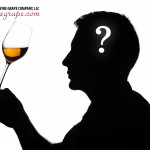

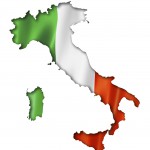
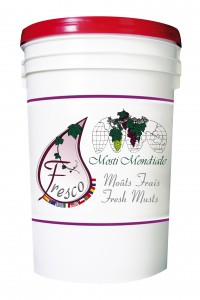
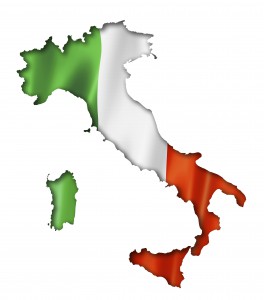
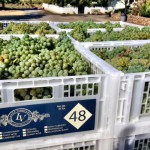

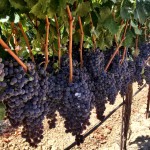
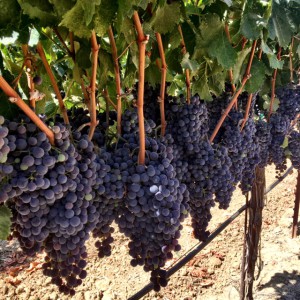
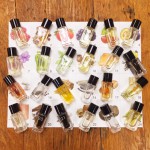
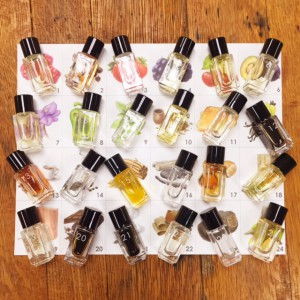

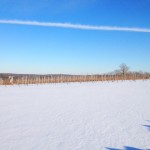
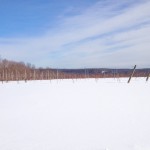

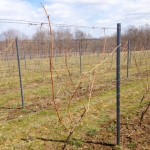
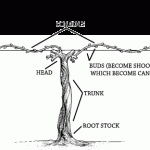
Recent Comments